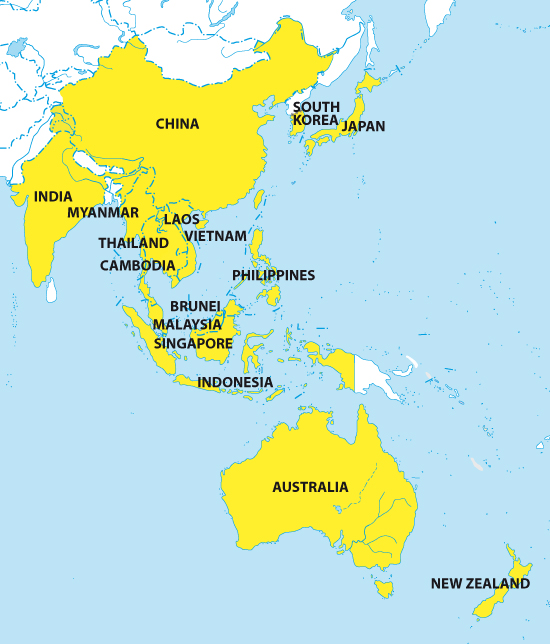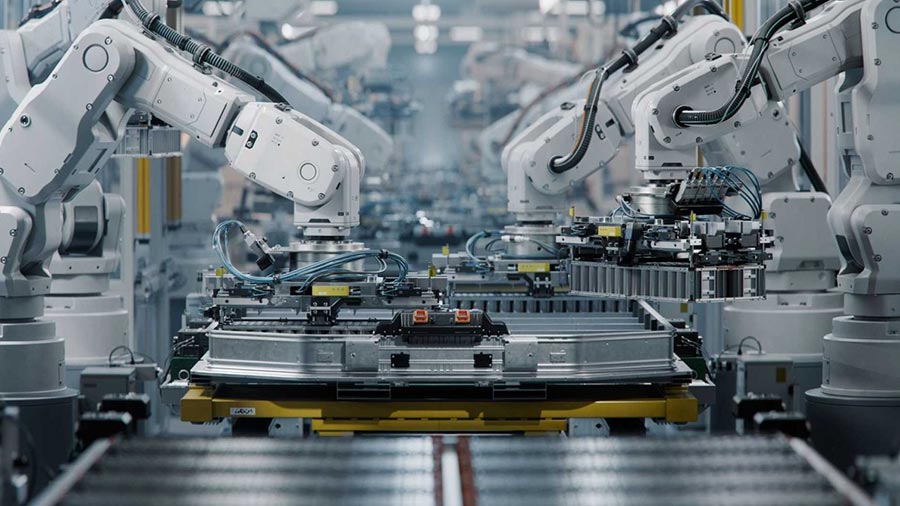China 2012: A Year in Review by Chris Devonshire-Ellis
During this week, China Briefing is featuring a series of specially-commissioned articles from prominent China-based writers regarding their thoughts on the key developments in the country during 2012, and what lies ahead in 2013. Today’s article is written by Chris Devonshire-Ellis, founder of Dezan Shira & Associates, as well as founder and publisher of China Briefing. The complete “China 2012: A Year in Review” series can be viewed here.
 Dec. 28 – In a year that has contained ample political nuances, from the fallout over Bo Xilai to the territorial disputes involving several islands, much that went on under the radar will, I feel, have rather more profound consequences. While media roared over the spats with Vietnam and Japan, perhaps rather more monumental changes were being honed on the anvils of Asian diplomacy. Indeed, 2012 was a banner year for the rather more subtle, yet continuing assimilation of China into Asian and international trade flows. It has gone unnoticed by many, yet the repositioning of China is already well under way. But first, let’s just look back in order to peek into the future.
Dec. 28 – In a year that has contained ample political nuances, from the fallout over Bo Xilai to the territorial disputes involving several islands, much that went on under the radar will, I feel, have rather more profound consequences. While media roared over the spats with Vietnam and Japan, perhaps rather more monumental changes were being honed on the anvils of Asian diplomacy. Indeed, 2012 was a banner year for the rather more subtle, yet continuing assimilation of China into Asian and international trade flows. It has gone unnoticed by many, yet the repositioning of China is already well under way. But first, let’s just look back in order to peek into the future.
Twenty years ago, the news was all about manufacturing in China for export, the potential for opening up a mass consumer market, and looking ahead to China joining the WTO to speed the process up. China joined the WTO 10 years ago, and since then has developed into the world’s second largest economy. China has done that mainly by producing mass consumer items for overseas markets, most notably in North America and Europe, but that cycle is now changing as well. Every decade brings its own definitions to bear, and we are already well into this century’s second.
The rise of China’s middle class consumer market – estimated to be some 250 million by the likes of McKinsey and the WSJ – has been fueled by a three pronged approach:
- Firstly, the manufacturing boom in China that saw many businesses become highly successful in manufacturing for international demand;
- Secondly, a fiscal policy that actively encouraged continuing investment into China’s infrastructure; and
- Thirdly, a “closed shop” approach by which China’s capital account has remained fairly well shuttered – China’s wealth has little place to go but around and around its own backyard.
That last point is the reason why luxury goods are so popular in China and the housing market is so out of synch with the actual quality on offer. When you have nothing to spend it on, and then add in all the Chinese connotations of “face,” plus again an understandable, yet still rather vulgar, desire to publicly flaunt lavish (if not downright garish) personal wealth, then it is no surprise that the Chinese have become the new consumer darlings. As long as China continues to keep their capital account relatively closed, the domestic consumer market will continue to boom. That they won’t be able to sustain that in the longer term, however, is being acknowledged in China preparing for its next balancing act – a soft landing for its consumer base by opening up trade corridors throughout Asia.
Although the first twelve years of this century have indeed seen the spectacular growth and rise of China, it’s not been the only game in town – a fact often lost in the midst of frenzied China headlines in the international media. China is rarely off the front pages these days; an editorial bonanza on the good, bad and the banal that has tended to obscure dramatic growth elsewhere in the region. For those in the know, India is booming – yet for those in the dark, it remains backward and dirty. The latter perceptions are simply outmoded. Our own India practice is growing at a faster rate than in any other country (our firm operates in six distinct jurisdictions), and our India Briefing online facility is our fastest growing in terms of attracting new subscribers. India is often compared, infrastructure-wise, to China 20 years ago, however it differs from China at that time by currently possessing a huge middle class – the same size of contemporary China’s at about 250 million. It is China’s middle class mass that has caught up with India’s, not the other way around. When India gets its political act together and passes its long-awaited tax reforms into law we’ll see an Indian boom take place. The fact that this hasn’t yet occurred is purely down to India’s usual political wrangling, but they’ll get there – no one wants to continue to pay taxes at India’s currently quite high rates, and least of all the politicians. We can expect income tax cuts in India, in due course, that will bring it far more in line with China. It’s purely a matter of time. Another pointer? It was little heralded – but India crept into the fourth place earlier this year in terms of the world’s largest economies, measured by purchasing power parity, and by the end of 2013 will probably overtake Japan to reach third position. Added to that, and alluded to by yesterday’s columnist Mishi Saran, the China-India trade corridor is expected to be the fastest growing in the world over the next decade.
This trend of Asian wealth creation is continuing throughout Asia – and specifically ASEAN – the 10-nation free trade bloc that comprises Brunei, Cambodia, Indonesia, Laos, Malaysia, Myanmar, Philippines, Singapore, Thailand and Vietnam. All that said then by way of introduction, the story this year has been China’s engagement with all of these countries – and beyond. In November, at the 21st annual ASEAN summit held in Phonm Penh in Cambodia, China signed off on negotiations to commence something called the Regional Comprehensive Economic Partnership (RCEP). I guess international media with newspapers to sell find stuff like that too boring to inflict upon a mass audience, but the impact of the RCEP will be immense. It outlines an entire free trade area that includes China, India, ASEAN, plus Japan, South Korea, Australia and New Zealand. It will be the largest free trade area in the world – duty free tariffs on thousands of products traded across the region. You’ll be able to manufacture in China and sell to Australia, duty free. Conversely, you’ll be able to manufacture in Myanmar and sell to China. At zero import duties. RCEP kicks in on January 1, 2015 – meaning according to my calendar, we have just two years for our businesses to prepare. And unlike the recent Mayan prophecy – this one will come to pass. In my view, this is the story of 2012 – China’s integration into Asia, not its disputes.

To deal with the implications, both the firm and the publishing house I founded are reacting by upgrading Asia Briefing to include a bi-monthly print magazine, while also creating the ASEAN Briefing brand which will be launched in February. The new Asia Briefing magazine, titled “Are You Ready for ASEAN 2015,” will be out in a matter of days, with subscription details in the related reading section below. Being prepared to look beyond China’s own boundaries for generating usable profits internationally will become an increasing goal for multinationals evaluating the region as a whole.
 Chris Devonshire-Ellis is the founder of Dezan Shira & Associates, as well as the founder and publisher of China Briefing. Dezan Shira & Associates celebrated 20 years of operations in China during 2012, and released a celebratory commissioned piece of music to mark the occasion. Fans of classical music may listen to and download this unique piece in addition to works by Mozart and Haydn here.
Chris Devonshire-Ellis is the founder of Dezan Shira & Associates, as well as the founder and publisher of China Briefing. Dezan Shira & Associates celebrated 20 years of operations in China during 2012, and released a celebratory commissioned piece of music to mark the occasion. Fans of classical music may listen to and download this unique piece in addition to works by Mozart and Haydn here.
Related Reading
 Asia Briefing Magazine: Are You Ready For ASEAN 2015?
Asia Briefing Magazine: Are You Ready For ASEAN 2015?
This brand new title will be launched on January 7th and will be published bi-monthly. To ensure you reserve your complimentary copy, please subscribe to Asia Briefing here.
- Previous Article China 2012: A Year in Review by Mishi Saran
- Next Article The Complete ‘China 2012: A Year in Review’ Series




























